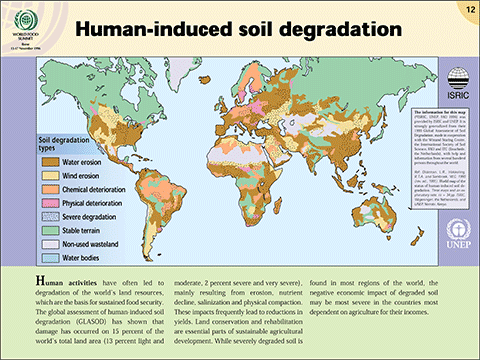Desertification
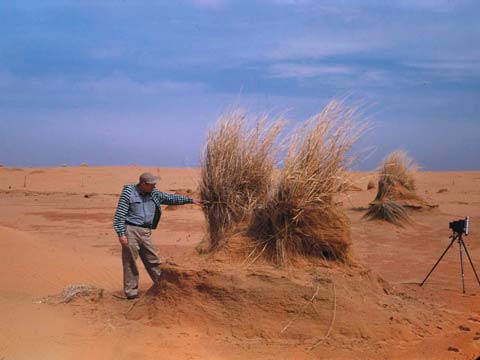
Desertification is a type of soil degradation. You can see the plant roots in this picture are holding on to the soil, keeping it in place. The surrounding soil has been removed by wind.
Photo courtesy of USDA Natural Resources Conservation Service.
Construction
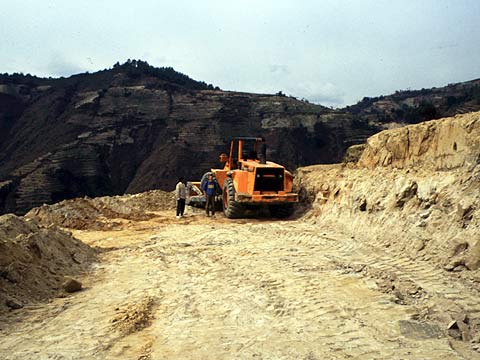
Human practices can lead to soil degradation, including construction practices that don’t protect the soil.
Photo by Margaret Schmidt, SFU.
Livestock
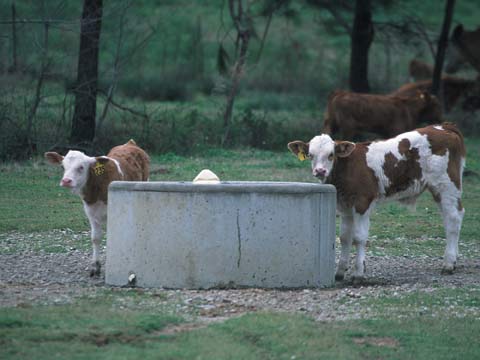
Animals can also cause soil compaction. The area around the water tank has been compacted because cows congregate in this area. However, the placement of the water tank as well as some fencing keeps the cows out of critical riparian (stream) habitat nearby.
Photo by Jeff Vanuga, USDA Natural Resources Conservation Service.
Heavy Machinery
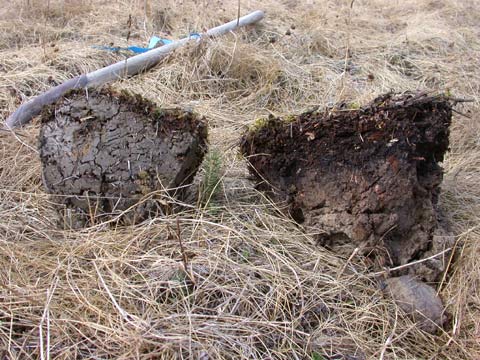
You can see the impact of heavy machinery on forest soils in this photo; the soil on the left has been compacted by heavy machinery, whereas the soil on the right is a native forest soil. Notice that the native forest soil has a thicker mat of organic matter (the dark brown near the top) and looks “fluffier”.
Photo by Chuck Bulmer, MoF, Vernon, BC.
Logging
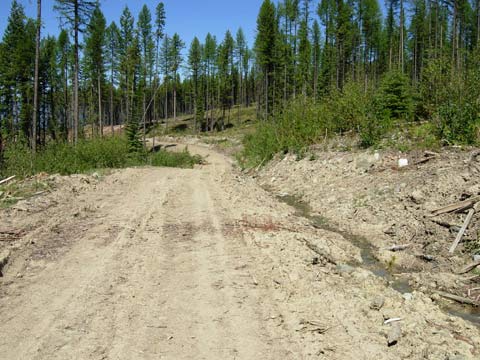
Soil compaction occurs along heavily used areas such as forest roads and landings (areas where logs are loaded onto trucks). The heavy machinery and trucks used put a lot of pressure on the soil.
Photo by Trudy Naugler, UBC, Vancouver, BC.
Collecting Field Bulk Density
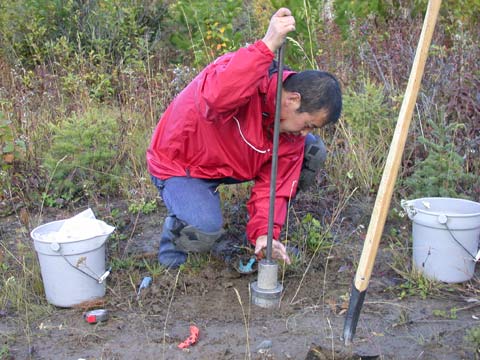
A sample being collected in the field to determine soil bulk density.
Photo by Chuck Bulmer, MoF, Vernon, BC.
Calculating Maximum Bulk Density
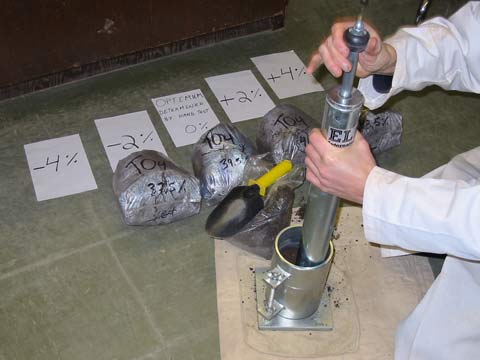
Maximum soil bulk density is determined using the Proctor test. A hammer is used to compact a sample inside a Proctor mold. A soil sample compacted at different moisture contents to determine the maximum compaction.
Photo by Lesley Dampier, UBC, Vancouver, BC.
Rehabilitated Road
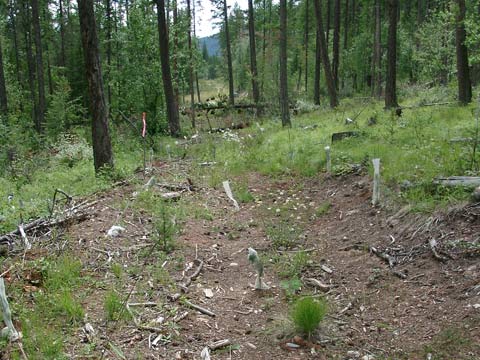
A forest road that has been rehabilitated following compaction.
Photo by Maja Krzic
Trees on a Non-rehabilitated Road

Eight year old lodgepole pine planted on a compacted road without rehabilitation.
Photos by Dr. Simon Zhao, UBC, Vancouver, BC.
Trees on a Rehabilitated Road
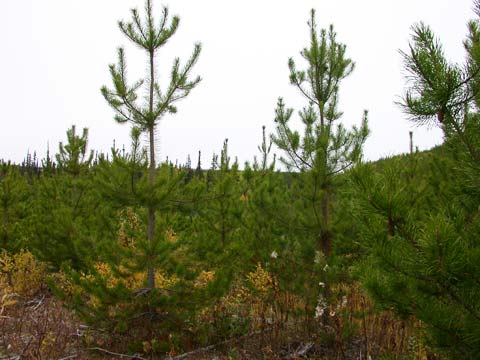
Eight year old lodgepole pine planted on a compacted road that has undergone rehabilitation.
Photos by Dr. Simon Zhao, UBC, Vancouver, BC.
